I love shooting the night sky. It is expansive, mysterious, colorful and dynamic, all at the same time. Admittedly, I haven't been doing much astrophotography over the last couple years, but I am working on making it a new habit.
Definition of "Astrophotography": Strictly speaking, astrophotography is photography of areas of night sky (like my photos below), astronomical objects (such as planets, stars, etc.) and celestial events (such as eclipses, meteor showers, etc.)
If you came here from my social media post, you're probably wondering what I meant when I said, "what we see when we look up is actually a snapshot of the past."
To my mind, this is one of the most fascinating aspects of the night sky.
Background
The stars we see at night are very, very far away. The brightest star in the sky - Sirius - is approximately 8.6 light years away (1 light year is equivalent to about 5.88 trillion miles... so you do the math, lol). This means if you look up at the sky tonight and see that star, the light hitting your eye has been traveling for 8.6 years. The same goes for any other star you see... the light must have traveled for several years in order for us to see them.
That's just crazy to me! And that is one reason why I wanted to create a star trail image - it represents the passage of time - which is somewhat unique for any photograph. And it is also a visual reminder that the Earth and objects around it are constantly moving.
Preparation
Weather
Any style of astrophotography relies heavily on the weather, specifically, the absence of clouds in the sky. Ideally, you want a relatively cool night and clear skies, but that's definitely hard to come by in Dominica at this time of year.
I monitored the weather for several days and chose days that were forecast to be mostly clear with low chances of precipitation. Even then, I encountered clouds and rain, as you can see in the photos below.
Location
Also, ideally, you should shoot the night sky in a dark area, or a location with little to no light pollution. I obviously broke this rule, but only because I couldn't think of a good location. A good location is a mix of a few things:
- not much light pollution
- there must be a clear view of the sky (no significant obstructions like buildings, mountains, etc)
- there must be some foreground and or mid-ground interest
That last point is key: to make a compelling photograph - one that will encourage the viewer's eyes to roam around the image for several seconds - it is important to have some visual interest apart from the trailing stars in the background.

My first attempt, taken from my backyard. Notice the very faint star trails.
My backyard served as a test location for a few days, but I eventually decided to move because lights from Newtown in the foreground easily overpowered the light from the stars. There are ways around this, which involve using a piece of tape at the front of my lens, but I figured I would scale back the difficulty since this was my first attempt.
I thought that Morne Bruce would be a good location because that area should have been relatively dark and the crucifix would serve as a good point of interest.
In the field
Being out in the field is where the real learning happens. The first thing I learned about the new location was that it was not as dark as I had hoped. There was a security light fixed to a tree near the crucifix.

Here's a closeup of the crucifix with the security light at the back.
I decided that this would not be as serious an issue as the lights at the previous location had been. In fact, the tree could become a point of interest too.
Something else I realized about the location was that the flowing grass and tree branches will make post-production of this image a nightmare (I explain this below.)
Shooting the trails
Shooting at night requires the use of a photography technique known as long exposure. This method of shooting allows the camera's sensor (the component that actually records the image) to be exposed to light for several seconds, or in some cases, several minutes. This is absolutely necessary in a dark environment.
A longer exposure means more light can be gathered and the more light that is gathered, the brighter the image will be. Here's a side by side comparison of the same scene with different exposure values.

The image on the left was exposed for 58 seconds. The image on the right was exposed for only 5 seconds. Notice that everything on the left side is brighter.
Just to be clear, I attempted the star trails shot at Morne Bruce on two consecutive nights. On the first night, clouds intervened and you can see one of the results below.
 Besides being interrupted by the clouds, I thought that this position was too vulnerable to light pollution. I switched vantage points for the next night.
Besides being interrupted by the clouds, I thought that this position was too vulnerable to light pollution. I switched vantage points for the next night.
Capturing the sky
After I chose on a location looking up at the crucifix, I focused my lens on the brightest star and started to work out my settings. I settled on: shutter speed (aka exposure) 58 seconds, f/5.0 and ISO 160. These values rendered an image where the stars were relatively bright and they weren't overpowered by the security light.
I captured 150 images using these settings and that took approximately 2 and a half hours.
Capturing the foreground
This was a bit more tricky to accomplish. I had previously decided to light paint the crucifix. In photography, light painting is a technique used in dark scenes where a moving light source is used to illuminate the subject of the photo during a long exposure.
This is a great technique to get a nuanced view of the subject (with light coming in from several directions), rather than a plain one directional perspective.
Deciding to light paint literally meant that I would need to run around with a light in my hand, pointing it at specific areas of the crucifix while the camera captured several images in sequence.
I adjusted my focus to the crucifix and captured 44 images using this method, but ultimately used 30 the create the foreground for the final image.
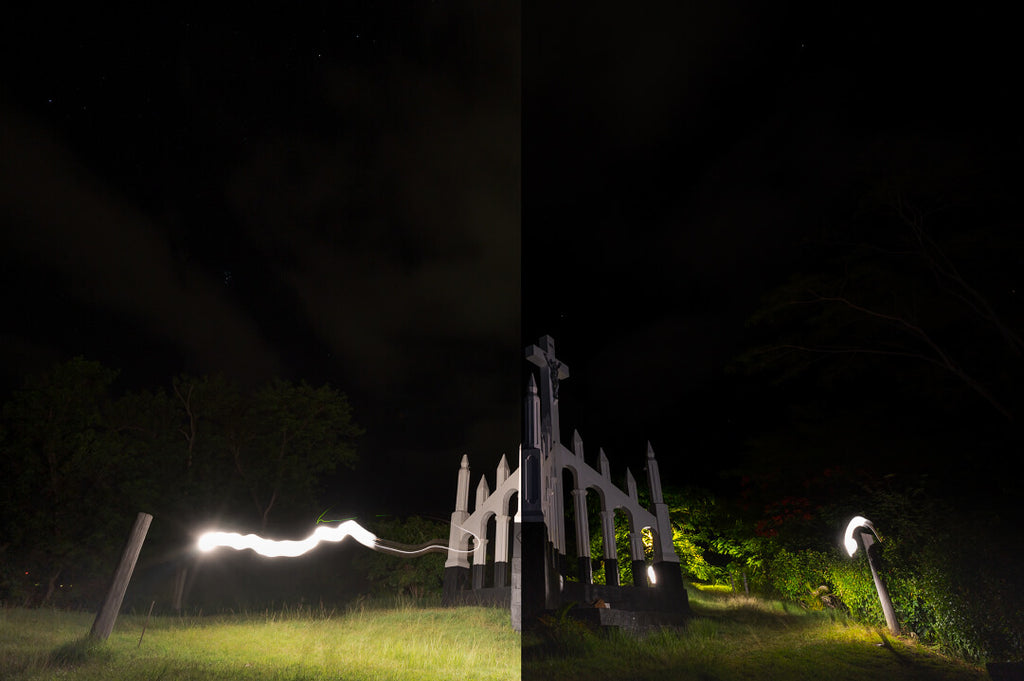
These are 2 out of the 30 images used to craft the foreground of the final image. The streaks of light seen here are what I look like running around with a light in my hand.
The result
It's important to note that post production is a very important aspect of creating an image. Some may argue that for some genres of photography, post-production is what will make or break the final image.
Here's why the foliage was a problem with this image: capturing that many images (150 for the stars and 44 for the foreground) meant that I would need to eventually blend them all together. For stationary subjects during a long exposure (such as the crucifix), this is fine. However, branches and grass are sure to move from shot to shot due to the wind, and this makes merging them into one photo a big headache.
I won't go into detail about the post-production process, mostly because I don't think you will be too interested in knowing the minutia. However, suffice it to say that I spent more time massaging the details of the image during the post-production phase, than I actual spent in the field capturing the individual photos.
Some of that time was due to trial and error, as this was my first star trails edit. So I'm sure that I will get better with time. However, in the meantime, I hope you like this one.

Leave a comment below to let me know your thoughts about this final image. If you'd like more details about post-production, let me know as well. Thank you for reading!




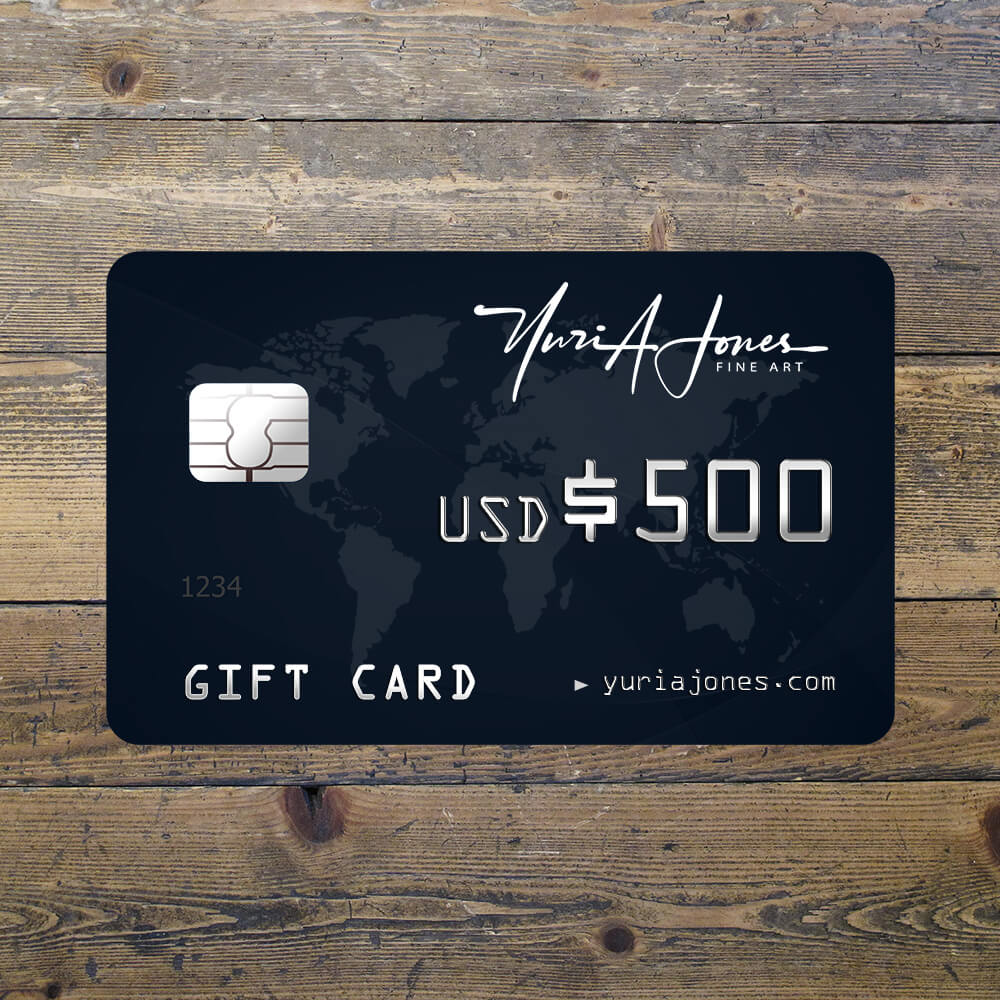







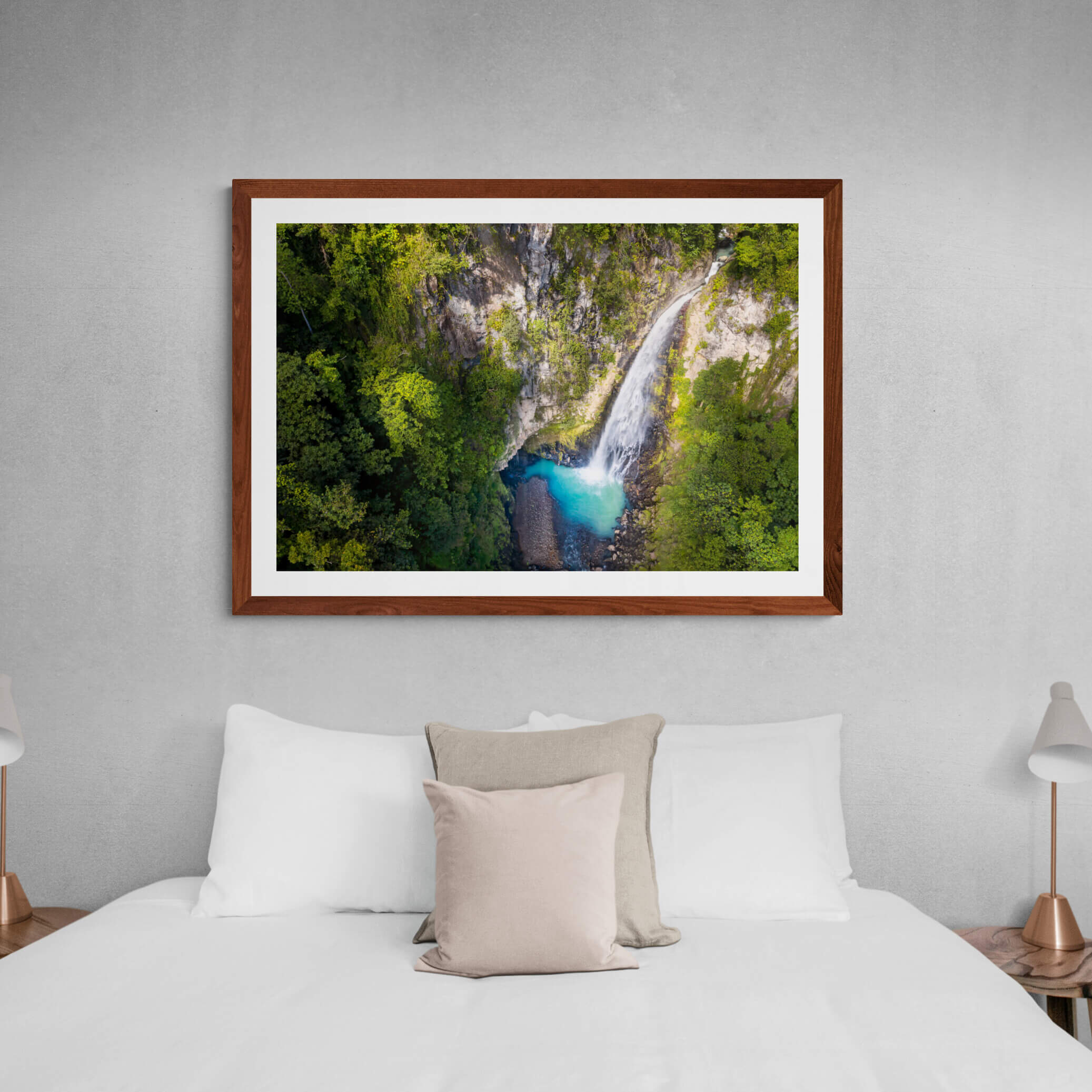
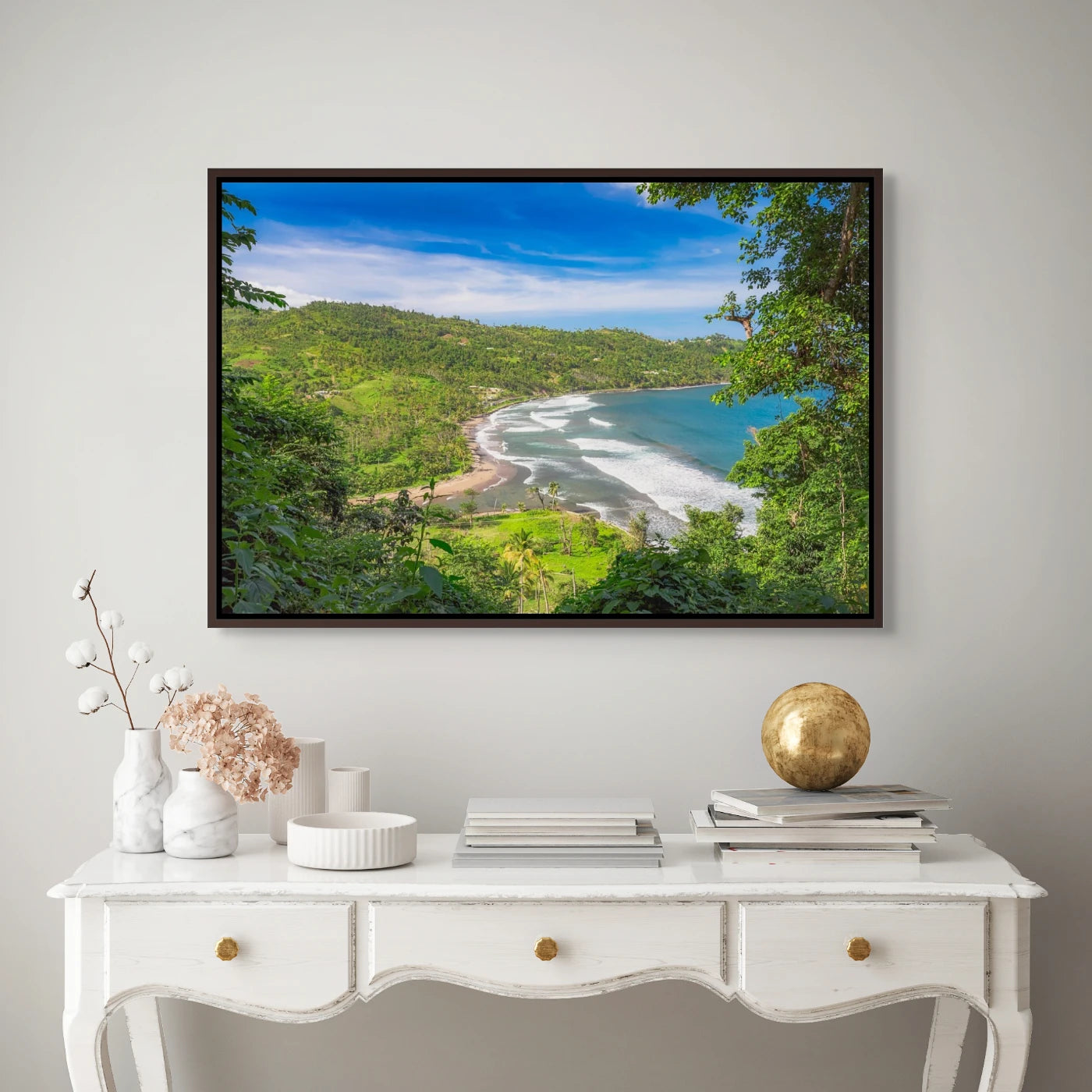


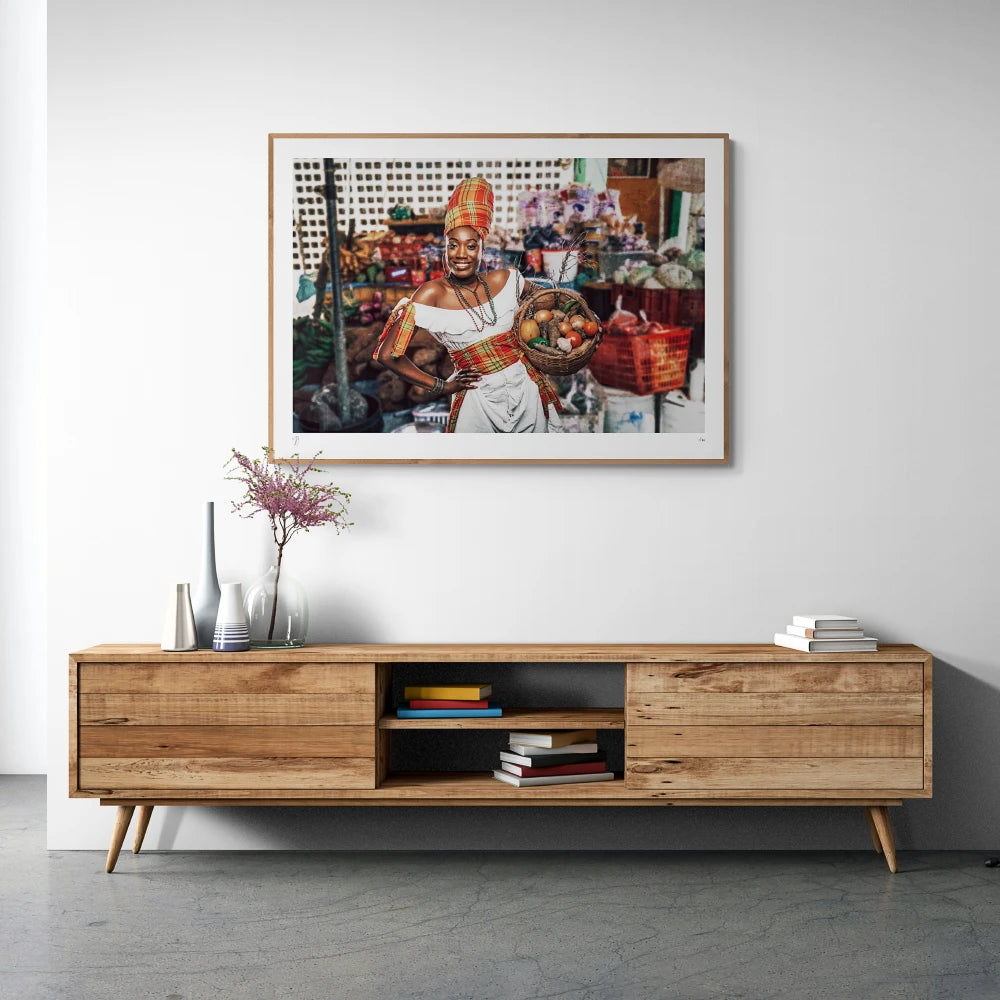





1 comment
Georgian DURAND
Great job ..for the first time i love it.. as you said you will get better at it..didnt realise that it took so much time and effort tho. Especially taking the photos. There is something mistic about that peice…good luck and blessings in your profession.
Leave a comment
All comments are moderated before being published.
This site is protected by hCaptcha and the hCaptcha Privacy Policy and Terms of Service apply.